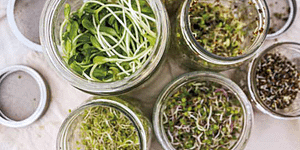We Become More Human as We Become More Mindful

Connections drive our society forward. When we connect with others we come to a better understanding of what it means to be human. It’s important to take a moment, slow down, be mindful, and look inward, especially during times of great stress.
The following is an excerpt from The Art of Leading Collectively by Petra Kuenkel. It has been adapted for the web.
Becoming More Mindful
As we have seen in agility, awareness can be curative. When we reflect, we draw meaning and coherence from a stream of experience that is riddled with incoherence. We gain the distance needed to observe reality without judgment. This is the time when insights emerge. Pieces begin to fit into a bigger picture. We get back into the driver’s seat of our life.
Awareness begins with observation and reflection.
In whatever way we integrate phases of stillness into our leadership journey, it helps us to slowly cut through the chains of habitual thought patterns or preconceptions and their subsequent actions. We become more human as we become more mindful of who we are and how we have come to be.
This is not self-indulgent introspection for its own sake. It is a gateway to transformation. We do not disengage from the world; we are more present in it. We become more responsive. As we connect with our own story, we connect with the story of humankind.
In this story, tending the common is not an additional voluntary service but the deeper meaning of our being here. There are 
One of them is meditation, the art of working through differences. Research shows that meditation in our personal lives leads to general contentment, more creative thoughts, and improved relationships.
There are clear benefits for business, too, ranging from better productivity to reduced staff turnover.14
Not surprisingly, some larger companies are offering meditation practices to their staff. But is this all that can be said about mindfulness?
There is a more important role of mindfulness, and meditation can take us a long way toward it.
The moment the mind finally becomes quiet, it sets free other competencies—compassion, gratitude, humility—as if these elements were waiting to be unleashed.
The key technique for mindfulness is mastering the mind and understanding that at the core of the human heart is love. If we access this place more often, we become more attentive to the human encounter and the depth of a situation—essential to better co-creation.
If we become aware of our own fears, our need for self-protection, or our desire for recognition, it frees our perception. We can see the same struggle in others. It helps us to relax, respect difference, and deal with conflicts and difficulties in a much more mature way.
If all this sounds too philosophical, I invite you to use a simple and mundane piece of mindfulness: Introduce a check-in to all your meetings, and then observe the difference that it makes in getting to results. How do we do this?
Start every meeting with each participant sharing just one sentence about what is on his or her mind. This simple act can make all the difference to people being present. Remember the launching of the coffee initiative in London? It was the sentence about the relationship to coffee that was the starting point for an effective result-oriented meeting.
Here are a few questions that help guide us toward mindfulness:
- How do I integrate phases of stillness into my days?
- In what way have we established a check-in ritual for our team meeting?
- When we think about our next stakeholder meeting, what would be a way of allowing people to meet as people in the beginning?
Balance
Our lives tend to be unbalanced, sometimes for long periods—too much work, the discontent of not attending fully to family life or relationships, and often a lack of the stillness that mindfulness requires.
We all know the symptoms of dwindling relationships, a sudden lack of passion for life, or the first signs of burnout syndrome, when everything seems to become too much.
My experience is that there is a deeper force that pulls us back into balance: a broken arm that forces us into not-doing, a good friend who turns away, a child needing attention, a crisis at work that we did not expect.
Not that we always understand the message, but if we observe the hints more closely we may gradually find a better rhythm of balance.
Why is this important? Because if we get the rhythm of balance right we become more effective, we’re happier, and—important for sustainability initiatives—we have more clarity in walking our path.
Balance is not an additional “nice-to-have”—it is essential in staying more relaxed in complexity. Hence it’s a mind-set, because if we render it important, it gets the attention it requires.
It’s a technique, because there are many ways to get it right—from the regular workout at the gym, to meditating, to playing with our kids. Yet I believe we can go one step farther in understanding how it works and why.
Can we simply learn from life?

If passion is remote, our contribution is manifesting far below its potential. If we cannot answer the question of what we are passionate about, it is worth beginning a search. We need to renew our quest.
There is a journey waiting for us.
The second energy is commitment. It is the decisiveness and perseverance our endeavors require to become successful; the caring and nourishing our projects need to take root and grow.
If we lack patience or become bored too easily, we might sabotage our own success. If we drown in obligations, we jeopardize our creativity.
Then it’s time to ask inconvenient questions like: What’s really important to me?
This takes us into the third energy—renewal. Reflection always finds us, whether it is our yearning for stillness or our move into slightly disenchanted self-doubt.
There is nothing wrong with it. It is a circle turning and helping us to make sense of experience or to reconnect with what we really want, with the core of our intention, with new possibilities in life.
How does this play out in collaboration initiatives? They follow the same rhythm. We need to revive passion when we notice that it dries up; we require sustained commitment to get to results.
Even as collaborating partners we need to attend to renewal—a mix between collective reflection and having fun together. It can be an enormous energy boost to schedule fun into collaboration initiatives, and it contributes to better results.
Here are a few questions that help guide us toward balance:
- What does my pattern of passion, commitment, and renewal look like?
- What helps our team to follow through and sustain our path?
- What are our ways of scheduling fun into our collaboration initiative?
Recommended Reads
The Science Behind Food Preferences: More Than a Matter of Taste
Recent Articles
Want to start your own medicinal herb garden? Passionflower, lemon balm, and goldenseal are great places to begin! These herbs are jam-packed with medicinal properties and easy to grow in a majority of climates.
Read MoreSprouts are easy to cultivate, mature quickly and pack a nutritional punch! You can make nutrient-rich sprouts from all kinds of edible seeds in your kitchen.
Read MoreWhy is modern wheat making us sick? That’s the question posed by author Eli Rogosa in Restoring Heritage Grains. Wheat is the most widely grown crop on our planet, yet industrial breeders have transformed this ancient staff of life into a commodity of yield and profit—witness the increase in gluten intolerance and ‘wheat belly’. Modern…
Read MoreSuffering from frequent headaches is miserable and immobilizing. If you haven’t had luck treating and preventing your headaches, skip the over-the-counter approach and prepare herbal formuals for migraines to use in the future! The following is an excerpt from Herbal Formularies for Health Professionals, Volume 4 by Jill Stansbury. It has been adapted for the…
Read More“It is more important to know what kind of person has a disease than to know what kind of disease a person has.” —Hippocrates Drawing on her decades of clinical experience and her extensive research, Dr. Jill Stansbury offers an unparalleled range of herbal formulas in her five-volume set, Herbal Formularies for Health Professionals. For each…
Read More








